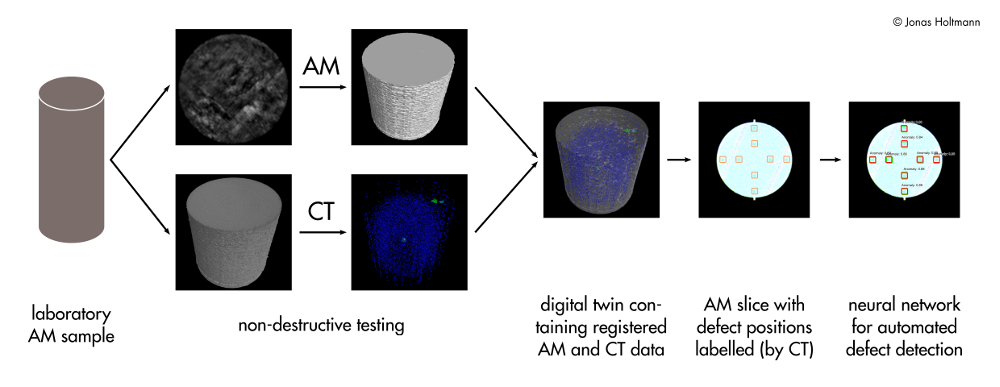Testia employee presents new method at AM conference
Additive Manufacturing (AM) saw huge technological improvements in the last years – but it still has a hard time to match the high quality criteria of the aerospace industry. The key lies in the monitoring of the AM process, which has been identified as the bottleneck of the further development. The necessary quality control of the manufactured parts is performed, as of today, by computed tomography (CT) – but post-production. This is time and cost expensive and leaves no possibility to react to problems during manufacturing.
A solution to this issue is online monitoring: defect analysis during the whole process, right from the beginning. Jonas Holtmann, PhD student in Product Engineering at Testia GmbH in Ottobrunn, has developed a new method to make online monitoring feasible and effective. It makes use of machine learning – the software learned how defects in AM parts can be detected by looking at artificially introduced anomalies in the printing process. Now, the neural network can apply this training to find similar anomalies in newly produced parts – already during production.
The method shows a high performance on a sample dataset with artificially produced artifacts, explains Jonas Holtmann. He presents his method at the Materials Science and Technology of Additive Manufacturing (MSTAM) in Bremen on December 10, 2019. His findings are very promising: The approach itself is independent of the monitoring system and should be applicable to a variety of input signals. The main benefit being time and cost efficiency thanks to a better quality control.

In order to contact us or find out more about Testia’s Computed Tomography servicesclick one of the links below.
